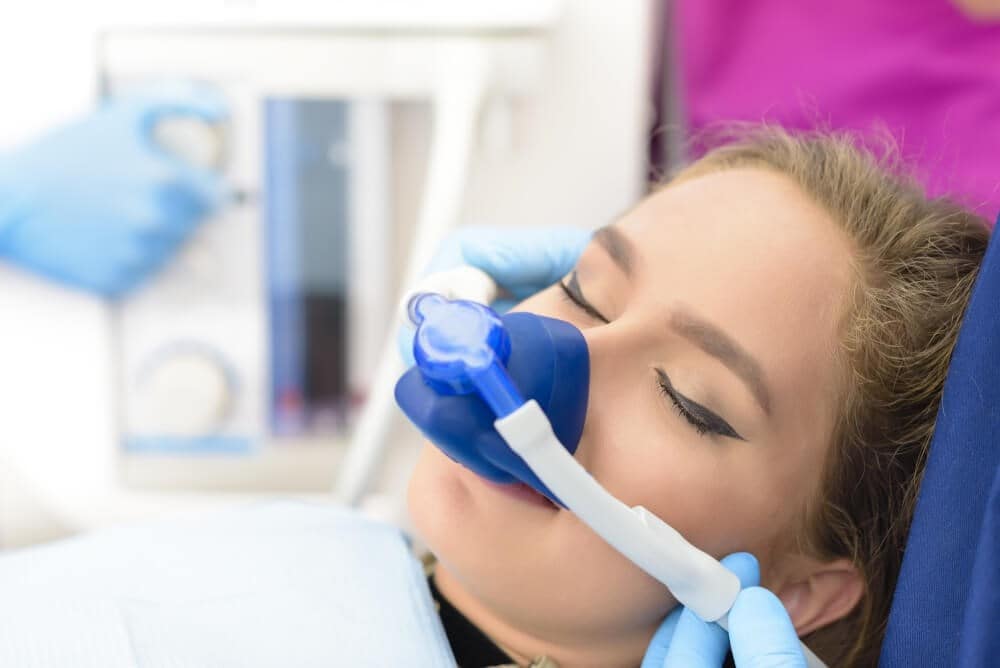Patients who experience dental anxiety or have difficulty remaining calm or still for the expected duration of dental treatment can overcome those obstacles to treatment with the benefits of conscious sedation in Maple Ridge. Sedation dentistry is the use of drugs to help patients achieve the level of relaxation necessary to benefit from dental care with the minimum of anxiety and discomfort.
Intravenous (IV) conscious sedation is one of three primary methods of sedation dentistry that offer varying degrees of relaxing and sedative effects that can be tailored to individual circumstances. We’ll describe the spectrum of options for conscious sedation near you before focusing on IV sedation specifically. Like all sedation dentistry methods and dental treatments, IV sedation offers advantages and disadvantages that may suggest it or some other alternative is the preferred solution to help you receive the treatment you need.
The spectrum of conscious sedation options
An essential point about all of these options is that the patient remains conscious throughout treatment, albeit in a highly relaxed state. In extreme cases involving extremely lengthy or complex dental procedures, general anesthesia — when the patient is unconscious and completely unaware of the treatment being received — may be appropriate, but those situations are definitely exceptions. If treatment is to be performed under general anesthesia, it will not be conducted at a standard dental office, but in a specially equipped dental surgery and subject to the supervision of medical staff.
Here is a brief introduction to the three types of conscious sedation available from your dentist in Maple Ridge.
Nitrous oxide (also called laughing gas) is the mildest form of sedation dentistry available. Nitrous oxide is inhaled, takes effect right away and wears off most quickly. As a result, it does need to be administered throughout treatment.
Oral sedation involves swallowing a sedative in the form of a pill or tablet the night before treatment or the morning of treatment. Oral sedation is particularly effective for helping patients who experience anxiety associated with anticipated or current dental treatment (as opposed to physical discomfort).
Intravenous (IV) sedation administers sedative drugs by injection into a vein in the patient’s arm. Let’s take a closer look at the advantages and disadvantages of this stronger level of sedative.
Advantages of IV sedation
- Intravenous sedation helps patients relax and to make dental treatment more comfortable
- Intravenous sedation is used more often to reduce anxiety than to counter pain or discomfort
- Significantly reduces anxiety without rendering patient unconscious
- A dentist near you is able to treat patient more quickly and effectively when the patient is relaxed
- Intravenous sedation is a highly predictable form of sedation, meaning the dentist and clinic’s staff will be able to regulate the level of sedative medication required and administered predictably and in real time
Disadvantages of IV sedation
- Intravenous sedation may not be covered by insurance benefits, thus requiring payment out of pocket
- Patients will be unable to drive for at least one hour after treatment under IV sedation
- Patients occasionally experience side effects from IV sedation. The most common side effects associated with intravenous sedation are headaches, dizziness and nausea.
The most significant risk of undergoing treatment under intravenous sedation is the risk that the relaxing effect of the sedatives on your body will relax your respiratory system to such an extent that they’ll not function properly. To minimize that risk and respond if necessary, you will be monitored at all times by the staff at a dental clinic near you.
If you are scheduled to undergo dental treatment but are concerned about your emotional or physical ability to go through the treatment without some form of sedative relaxation, ask your dentist about the availability and appropriateness of nitrous oxide, oral sedation or IV sedation for you.

